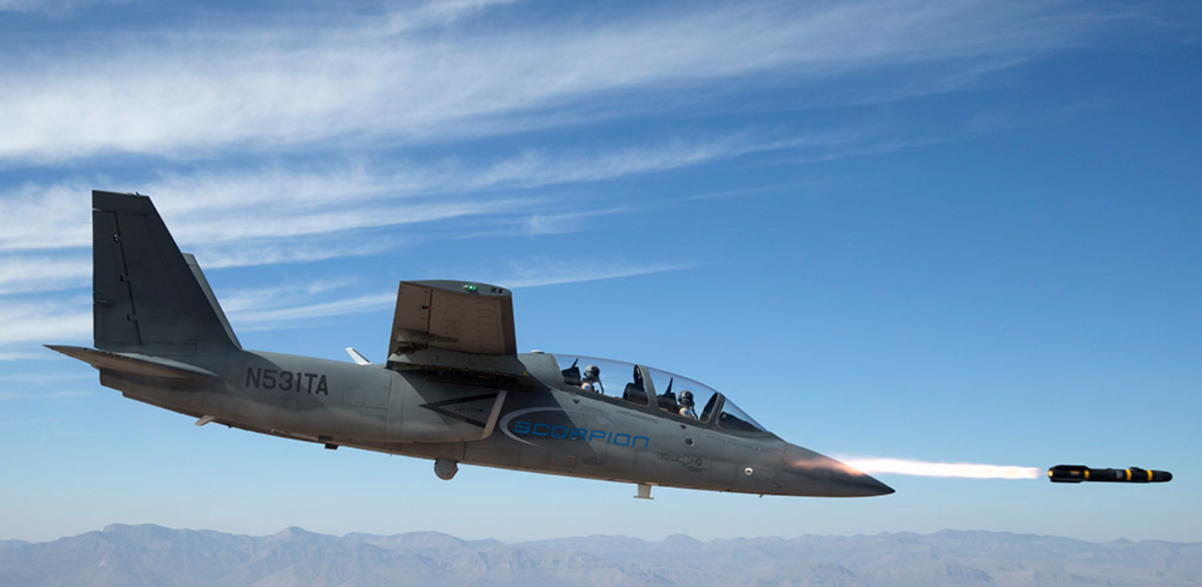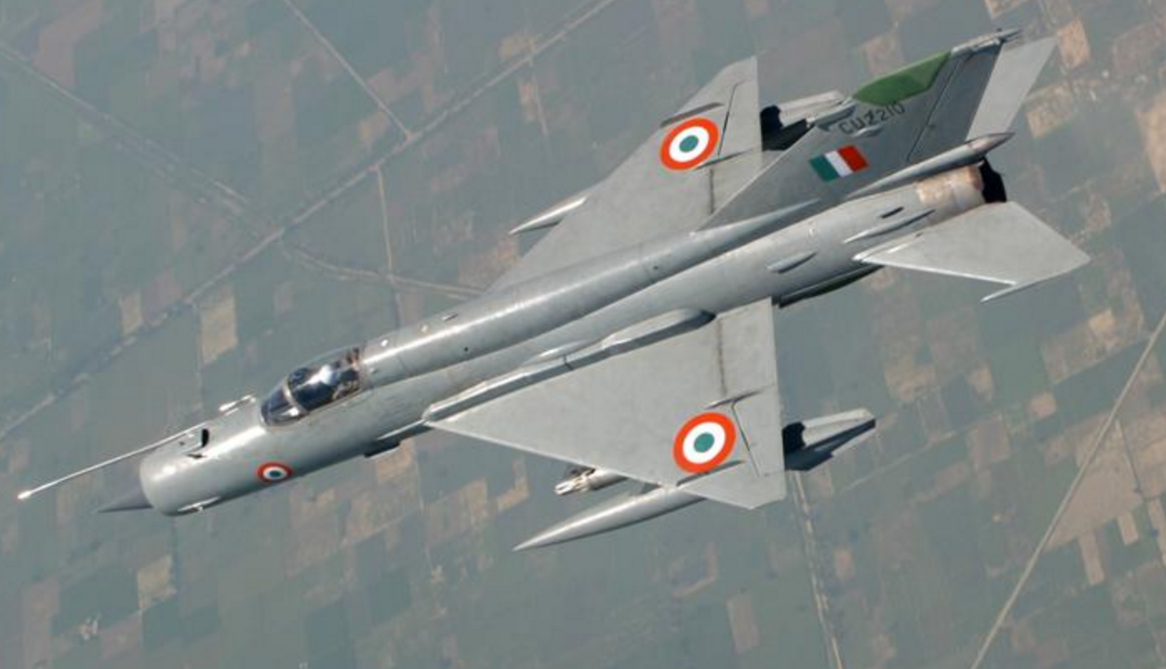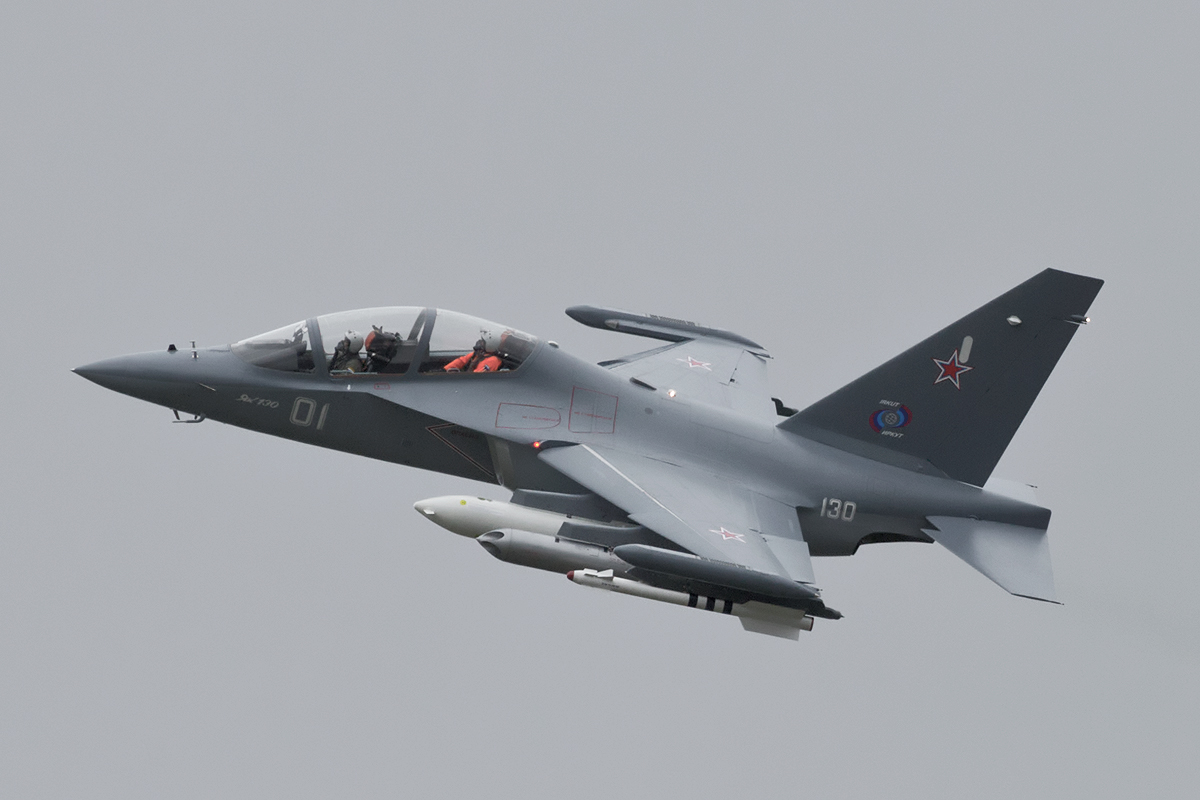340Views 8Comments

Saudi Arabia interested in Textron Scorpion light combat aircraft
Textron’s CEO Scott Donnelly told investors that the company is in preliminary talks with Saudi Arabia for the sale of Scorpion light combat aircraft. Flight Global reported that the information was disclosed during Textron’s second-quarter results call with shareholders.
The procurement of “light close air support” (CAS) aircraft was among the armaments Riyadh intended to procure from the U.S. as part of its $110 billion U.S. weapons deal with Washington.
Textron has sent the Scorpion to Holloman Air Force Base in New Mexico to support the U.S. Air Force’s capability and feasibility tests (beginning from July 31). The results will help the Air Force decide whether to proceed with or shelve the OA-X, which is to be a counterinsurgency (COIN)-focused CAS platform.
First flown in 2013, the Textron AirLand Scorpion is a lightweight twin-engine combat aircraft designed to assume training, CAS and intelligence, surveillance and reconnaissance (ISR) missions.
The Scorpion uses two Honeywell TFE731 turbofan engines, which provide the Scorpion a maximum speed of 833 km/h and ferry range of 2,963 km. It has a payload of 4,200 kg, of which 1,400 kg is internal (and the remainder available through six external hardpoints).
Textron has built comprehensive portfolio of CAS-capable systems. Besides the Scorpion, Textron (via its numerous divisions) also offers the Bell Helicopter AH-1Z Viper, AT-6 Wolverine and Nightwarden tactical drone. The company even offers its own munitions, namely G-CLAW and Fury air-to-ground missiles.
Notes & Comments:
Of the aircraft participating in the OA-X program, the Scorpion is the only jet-powered aircraft. While the Scorpion costlier to fly per hour than its turboprop-powered competitors, it can fly faster, higher and with more munitions. Its internal bay also provides with unique configuration options for ISR.
The Honeywell TFE731 turbofan engine is also a mature and ubiquitous design, boasting a production run of over 11,000 and providing competitive operational and maintenance costs. Thus, the Scorpion would still be cheaper to fly than sophisticated multi-role fighters, yet retain several of their advantages, such as compatibility with stand-off range air-to-surface munitions (with substantive loads). In fact, the Scorpion even has a payload capacity that is on-par with larger multi-role fighters.
With some officials concerned that CAS-focused COIN platforms may come across anti-air warfare (AAW) threats eventually, some may view the Scorpion as the path future COIN platforms ought to take. Granted, this idea would also have to stand against the evolution of unmanned aerial vehicle (UAV) designs, notably attritable concepts such as the XQ-222 Valkyrie and the time it will take for those to be sufficiently capable and affordable enough to negate any need for manned fixed-wing CAS platforms.
Saudi Arabia’s apparent interest in the Scorpion may refer to a presumed requirement for an entry-tier fighter to re-assume the role left by the Royal Saudi Air Force’s (RSAF) retired Northrop F-5 Tiger II. Unlike the Eagle or Typhoon, the F-5 was the RSAF’s primary point-defence fighter. Saudi Arabia had reportedly even expressed interest in the JF-17 Thunder in late 2016, indicating that a lightweight jet was sought.
It is possible, if not likely, that Riyadh’s interest in the Scorpion is in reference to the same requirements that had apparently driven it to inquire about the Thunder. Although talks are in the early stages (but not too early for disclosure to Textron shareholders), compatibility and interoperability with the RSAF’s inventory of U.S. munitions will be factors in its final decision.



8 Comments
by umar rana
Is’t jf-17 best choice in that matter.jf-17 obviously better than the TEXTRON SCORPION LIGHT COMBAT AIRCRAFT
by Steve
The river of money keeps flowing from Riyadh to Washington to buy weapons to be used on fellow Arabs and Muslims…
by Steve
Sorry a bit off topic. The Saudis will protect the crown (not permitted in Islam) their forefathers won by collaborating with the British and helping destroy the Ottoman Empire. They will do it even at the cost of silencing and killing every Muslim in the Middle East. They have no clue what representative government, civil liberties, governance, and gender equality is and are slaves of the West, so they are hypocritically loved by the West. The “Arab spring” was quickly overturned by scheming and mass murder with the West’s support in client states, and hijacked into attacks and widespread destruction in countries not towing the line. We see all that, but are too debilitated by rubbish leaders with no vision to be able to influence events, despite being the only nuclear power of the Muslim world.
by ahmria
The JF17 thunder is a light multirole fighter and is a bit of overkill in a COIN environment. This scorpion is basically a jet powered COIN mission aircraft and again would probably be much cheaper to operate in a low threat environment than the JF17 which has a much thirstier engine and probably less loitering time unless refuelled by tankers. Two aircraft designed for very different missions.
by Michael Lopez
Once someone buys the Scorpion, I think the floodgates will open. It is a heck of an aircraft. And it will be good for America since it will probably be built in Wichita.
by Shakeel
Excellent point Steve.
by Steve
I agree it’s a very good aircraft but is suitable for using in undefended airspace against men riding trucks or running to hide behind rubble and firing back with AK-47’s. Using night vision or a Sniper pod it will be perfect for the Saudis in Yemen. For people with less cash, the US government may consider buying 50 with Sniper pods and gift 20 to Afghanistan, and 30 to Pakistan as both are fighting the GWOT, or at least sell it heavily subsidised. That will support Wichita too. Other than that there are not many less wealthy countries with a COIN market. Maybe Philippines or Nigeria. Possibly Iraq but they have F-16’s and oil. Maybe eventually the Syrian government and I’m serious ???.
by SP
Thats a lot of free oil and jobs the US is getting to prop up the saudi regime for a few more years.